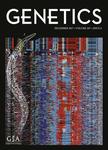版权所有:内蒙古大学图书馆 技术提供:维普资讯• 智图
内蒙古自治区呼和浩特市赛罕区大学西街235号 邮编: 010021

作者机构:Univ N Carolina Dept Biol Curriculum Genet & Mol Biol Chapel Hill NC 27599 USA
出 版 物:《GENETICS》 (遗传学)
年 卷 期:1999年第152卷第4期
页 面:1531-1541页
核心收录:
学科分类:0710[理学-生物学] 07[理学] 09[农学]
基 金:NIGMS NIH HHS [GM24110] Funding Source: Medline
主 题:载体蛋白质类/遗传学 载体蛋白质类/生理学 染色体 真菌/超微结构 DNA螺旋酶类/遗传学 DNA螺旋酶类/生理学 DNA 真菌/遗传学 DNA结合蛋白质类/遗传学 DNA结合蛋白质类/生理学 上位性 遗传 真菌蛋白质类/遗传学 真菌蛋白质类/生理学 细胞内信号肽和蛋白质类 蛋白质丝氨酸苏氨酸激酶 重复序列 核酸 阻遏蛋白质类/遗传学 阻遏蛋白质类/生理学 酵母菌 酿酒/遗传学 酵母菌 酿酒/超微结构 酿酒酵母蛋白质类 端粒/超微结构 端粒结合蛋白质类
摘 要:In the yeast Saccharomyces cerevisiae, chromosomes terminate with similar to 400 bp of a simple repeat poly(TG(1-3)). Based on the arrangement of subtelomeric X and Y repeats, two types of yeast telomeres exist, those with both X and Y (Y telomeres) and those with only X (X telomeres). Mutations that result in abnormally short or abnormally long poly(TG(1-3)) tracts have been previously identified. In this study, we investigated telomere length in strains with two classes of mutations, one that resulted in short poly(TG(1-3)) tracts (tel1) and one that resulted in elongated tracts (pif1, rap1-17, rif1, or rif2). In the tel1 pif1 strain, Y telomeres had about the same length as those in tell strains and X telomeres had lengths intermediate between those in tel1 and pif1 strains. Strains with either the tel1 rap1-17 or tel1 rif2 genotypes had short tracts for all chromosome ends examined, demonstrating that the telomere elongation characteristic of rap1-17 and rif2 strains is Tel1p-dependent. In strains of the tel1 rif1 or tel1 rif1 rif2 genotypes, telomeres with Y repeats had short terminal tracts, whereas most of the X telomeres had long terminal tracts. These results demonstrate that the regulation of telomere length is different for X and Y telomeres.